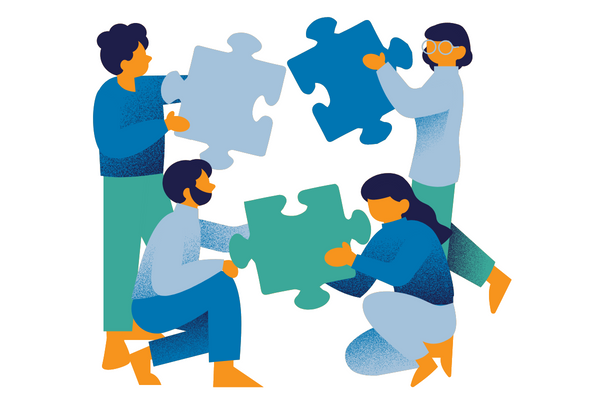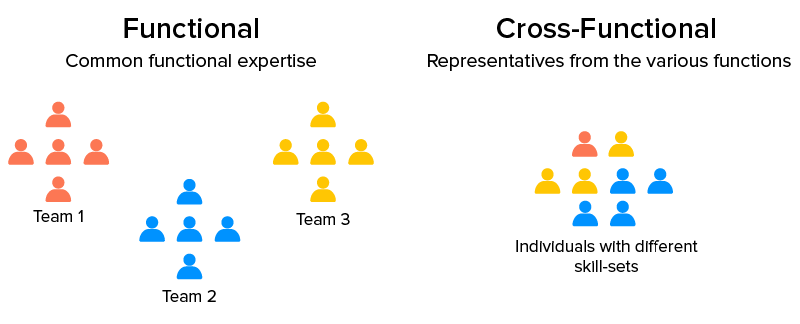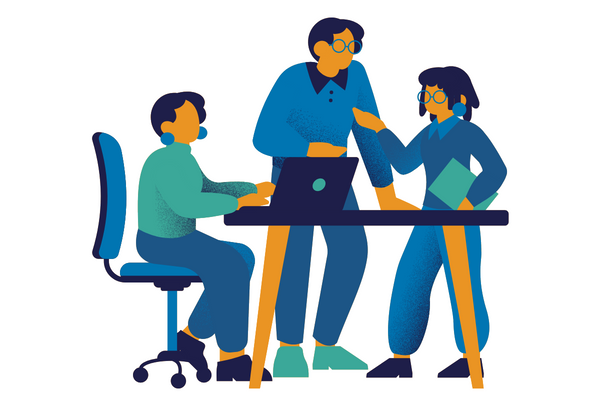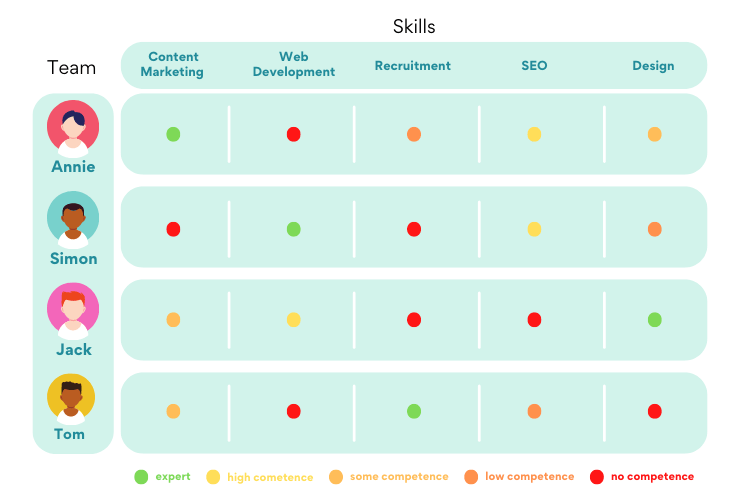Coaching Learning: Developing a Learning Culture In The Workplace
By Team Lean Agile Intelligence

Developing a Learning Culture In The Workplace
In today's fast-paced and ever-changing world, Coaching Learning has become a fundamental value that organizations must embrace to create a culture of continuous learning. There are multiple techniques available to Agile Coaches and Scrum Masters to help their teams become more cross-functional, prioritize skills, and account for opportunities for growth.
In this post, we explore the most effective ways to approach Coaching Learning, sharing key best practices that can be applied at different stages of your learning journey. By following these foundational techniques, you can equip yourself with the skills and knowledge needed to implement successful team strategies. However, it's important to remember that Coaching Learning is just one component of the bigger picture. To gain a comprehensive understanding of your current coaching process status, we recommend taking advantage of our free agile assessment for Scrum Masters and Agile Coaches.
Coaching Learning and The Learning Journey
At Lean Agile Intelligence, we consider Coaching Learning to be fundamental since it demonstrates an individual's ability to create a culture of continuous learning. Our focus is on fostering an environment that encourages exploration, experimentation, and growth, where everyone is open to feedback and willing to challenge their assumptions. We have organized the learning journey into four distinct stages - Developing, Emerging, Adapting, and Optimizing - and will cover each of these stages in-depth, providing you with practical advice and techniques to enhance your skills in this area.

Source - How Cross-functional Teams Help In Building Better Digital Products?
Developing
A coach “developing” an understanding of the value of Coaching Learning and adopting the foundational techniques should focus on the following improvements:
-
The What: Teaches different retrospective techniques to keep retrospectives lively and provide facilitators options given the state of the team
-
The How: As a coach, facilitating effective retrospectives is a crucial part of helping teams continuously improve and adapt. Retrospectives are opportunities for teams to reflect on their past performance, identify areas for improvement, and take action to address them. Here are some techniques and articles that you can use to teach different retrospective techniques and keep retrospectives lively:
-
Start-Stop-Continue: This simple retrospective technique involves asking team members to identify things that the team should start doing, stop doing, and continue doing. It's a quick and easy way to gather feedback on team practices and behaviors. You can find more information about this technique in this article: "Retrospective Technique: Start, Stop, Continue"
-
Mad, Sad, Glad: This retrospective technique encourages team members to express their emotions about the past sprint or iteration by identifying things that made them mad, sad, or glad. It's a great way to surface any concerns or issues that may be affecting team morale. You can find more information about this technique in this article: "Retrospective Technique: Mad, Sad, Glad"
-
5 Whys: The 5 Whys is a root cause analysis technique that helps teams identify the underlying causes of problems or issues. It involves asking "Why?" five times to dig deeper into the root causes of a problem. This technique can help teams uncover hidden issues and address them effectively. You can find more information about this technique in this article: "Root Cause Analysis Technique: 5 Whys"
-
Lean Coffee: Lean Coffee is a structured format for conducting retrospectives that encourages open and collaborative discussions. It involves using a Kanban board to capture and prioritize topics, and then discussing them in time-boxed intervals. It's a great technique for engaging teams in active discussions and generating actionable insights. You can find more information about this technique in this article: "Retrospective Technique: Lean Coffee"
-
Appreciative Inquiry: Appreciative Inquiry is a positive and strengths-based retrospective technique that focuses on identifying and amplifying what is working well in the team. It involves reflecting on positive experiences and achievements, and leveraging them to drive further improvement. You can find more information about this technique in this article: "Retrospective Technique: Appreciative Inquiry"
-
Liberating Structures: Liberating Structures are a collection of 33 different facilitation techniques that can be used to make retrospectives more engaging, interactive, and inclusive. These techniques provide coaches with a wide range of options to choose from based on the state of the team and the desired outcomes. You can find more information about Liberating Structures in this article: "Liberating Structures: A Retrospective Technique Toolbox"
-
-
- The What: Provides multiple options for resolving issues raised in retrospectives so the team can experiment with the one they feel is the best fit
- The How: As a coach, it's important to provide teams with multiple options for resolving issues raised during retrospectives. This allows the team to experiment with different approaches and find the one that best fits their needs. Here are some techniques and articles that you can use to provide multiple options for issue resolution in retrospectives:
-
Dot Voting: Dot Voting is a simple and visual technique that involves giving team members a set number of dots to place on different options or ideas. This allows the team to quickly and visually prioritize the most preferred options for issue resolution. You can find more information about this technique in this article: "Retrospective Technique: Dot Voting"
-
Fist of Five: Fist of Five is a technique that allows team members to express their level of agreement or preference for different options using a scale of 1 to 5, with 1 being the least favorable and 5 being the most favorable. This provides a quantitative measure of team members' opinions and helps in prioritizing options for resolution. You can find more information about this technique in this article: "Retrospective Technique: Fist of Five"
-
Decision Matrix: Decision Matrix is a technique that involves creating a matrix to evaluate different options based on criteria such as impact, effort, feasibility, and desirability. This allows the team to objectively assess and prioritize options for resolution based on agreed-upon criteria. You can find more information about this technique in this article: "Retrospective Technique: Decision Matrix"
-
- The How: As a coach, it's important to provide teams with multiple options for resolving issues raised during retrospectives. This allows the team to experiment with different approaches and find the one that best fits their needs. Here are some techniques and articles that you can use to provide multiple options for issue resolution in retrospectives:

Emerging
A coach “emerging” beyond the foundational techniques of Coaching Learning and embracing it as they become more proficient should focus on the following improvements:
-
The What: Teaches strategies on how to plan and build in dedicated time so that team members can enhance their skills
-
The How: As a coach, it's important to help teams plan and build dedicated time for skill enhancement. Here are some techniques and articles that you can use to teach strategies on how to plan and build in dedicated time for skill enhancement:
-
Skills Matrix: A skills matrix is a visual representation of team members' skills and expertise. coaches can work with the team to create a skills matrix that identifies the skills that are important for the team's work, and then use it as a planning tool to allocate dedicated time for skill enhancement. You can find more information about this technique in this article: "Scrum Team Skills Matrix"
-
Communities of Practice: Communities of Practice are informal groups of team members who come together to share knowledge, learn from each other, and enhance their skills in a particular area. Coaches can facilitate the formation of Communities of Practice within the team or across the organization to provide dedicated time and space for team members to learn and grow. You can find more information about this technique in this article: "Communities of Practice"
-
Personal Development Plans: Coaches can work with team members to create personal development plans that outline their individual goals and aspirations for skill enhancement. These plans can be used as a guide for team members to set aside dedicated time for learning and development. Coaches can provide coaching and support to help team members identify relevant learning resources, set achievable goals, and track their progress over time.
-
Just-in-Time Learning: Coaches can encourage team members to adopt a "just-in-time" learning approach, where they focus on learning and enhancing their skills as they encounter relevant challenges or opportunities during their work. This can involve providing team members with access to learning resources, such as online tutorials, documentation, or training materials, and encouraging them to proactively seek out learning opportunities as needed.
-
-
- The What: Facilitates the creation and execution of Communities of Practice
- The How: As a coach, facilitating the creation and execution of Communities of Practice can be a valuable approach to foster learning, collaboration, and skill enhancement within a team or across the organization. Here are some techniques and articles that you can use to facilitate the creation and execution of Communities of Practice:
-
Identifying Areas of Interest: Coaches can work with team members to identify areas of interest or expertise that can serve as the foundation for a Community of Practice. Coaches can conduct surveys, interviews, or discussions to understand the interests and aspirations of team members and identify potential areas for Communities of Practice.
-
Creating a Charter: Once the area of interest is identified, coaches can help the team create a charter for the Community of Practice. The charter outlines the purpose, goals, and expectations of the Community of Practice, as well as the roles and responsibilities of its members.
-
Defining Meeting Cadence: Coaches can work with the Community of Practice members to define a meeting cadence that works best for the team. This can involve deciding on the frequency, duration, and format of the meetings, whether they are in-person or virtual, and the preferred tools or platforms for communication and collaboration.
-
Providing Resources & Encourage Collaboration: Coaches can support Communities of Practice by providing relevant resources to help members enhance their skills and knowledge. This can include articles, books, videos, online courses, workshops, or external experts who can provide guidance and expertise. Coaches should also encourage members to share their experiences, challenges, and best practices, and facilitate peer-to-peer learning and mentorship. Read more on this here.
-
- The How: As a coach, facilitating the creation and execution of Communities of Practice can be a valuable approach to foster learning, collaboration, and skill enhancement within a team or across the organization. Here are some techniques and articles that you can use to facilitate the creation and execution of Communities of Practice:
* * * * * *
"Coaches can help their teams become more cross-functional by first establishing a skills matrix."
* * * * * *
Adapting
A coach that is “adapting” the Coaching Learning to extract the full benefit should focus on the following improvements:
- The What: Helps facilitate a plan for the growth of skills
-
The How: Coaches can facilitate the growth of skills in team members through a structured approach that includes assessing current skill levels, setting skill development goals, and creating individual development plans (IDPs). Start by assessing team members' current skill levels using tools such as skills assessments, self-assessments, or performance evaluations, and then work with team members to set skill development goals that are specific, measurable, achievable, relevant, and time-bound (SMART). Based on these goals, coaches can help team members create IDPs that outline the actions and resources needed for skill development, such as training, workshops, mentoring, job rotations, or stretch assignments. This approach provides a clear roadmap for team members to enhance their skills and aligns with their career aspirations and the needs of the team or organization.
-
- The What: Teaches cross-training strategies and how to build in dedicated time so that team members can enhance their skills in other functions and domains they are interested in
- The How: Start by understanding team members' interests and goals related to other functions or domains through discussions, assessments, or surveys. Based on this, they can create a cross-training plan with a timeline, learning resources, and milestones. Coaches can work with team members to allocate dedicated time for cross-training activities, advocate for their importance, and provide learning opportunities through workshops, training sessions, or external resources. Encouraging peer learning and mentoring within the team or organization can also be beneficial.
- The How: Start by understanding team members' interests and goals related to other functions or domains through discussions, assessments, or surveys. Based on this, they can create a cross-training plan with a timeline, learning resources, and milestones. Coaches can work with team members to allocate dedicated time for cross-training activities, advocate for their importance, and provide learning opportunities through workshops, training sessions, or external resources. Encouraging peer learning and mentoring within the team or organization can also be beneficial.
- The What: Facilitates the sharing of experiment results with other teams
-
The How: Teams should have knowledge-sharing platforms and regular result-sharing meetings such as Scaled Retrospectives and Post-Mortem Reviews. Establishing Communities of Practice (CoP) is another great way to ensure regular sharing of results. Let's dive deeper into some of the techniques below.
-
Scaled Retrospectives: Scaled retrospectives are a collaborative reflection and learning practice that involves multiple teams or stakeholders. After running experiments, teams can come together in a scaled retrospective to share their findings and learnings. This can be done in a structured format, such as a "What Went Well, What Didn't, What Can We Improve" (WWW/WDW/WCI) retrospective, where teams share their experiment results, discuss the outcomes, and identify improvements for future iterations.
-
Communities of Practice: Communities of Practice (CoPs) are groups of individuals who share a common interest or expertise and come together to learn, share knowledge, and improve their practices. Teams can create CoPs focused on specific topics related to their experiments, such as agile practices, DevOps, or specific technologies. CoPs can meet regularly to share experiment results, lessons learned, and best practices, and can provide a platform for cross-team collaboration and learning.
-
Post-mortem Reviews: Post-mortem reviews, also known as "after-action reviews" or "retrospectives," are structured reviews conducted after completing an experiment or project. Teams can conduct post-mortem reviews to reflect on the experiment results, discuss what worked well, what didn't, and what could be improved, and capture learnings for future experiments or projects. Post-mortem reviews can help teams identify areas of improvement and ensure that the learnings from experiments are incorporated into future practices.
-
-

Source - How to Create a High-Performing Cross-Functional Agile Team?
Optimizing
A coach “optimizing” knowledge sharing of the Coaching Learning practice learnings across the enterprise should focus on the following improvements:
- The What: Teaches and shares advanced techniques to orchestrate a learning culture outside of those they directly support (i.e., Communities of Practice, Workshops, Mentoring)
- The How: The key to foster a culture of continuous learning is for coaches to create opportunities for team members to learn from each other, share their expertise, and collectively improve their skills and knowledge on advanced techniques, creating a vibrant learning culture within the organization. Below are some techniques that coaches can use to orchestrate a learning culture outside of those they directly support. Apart from implementing Communities of Practice, coaches can also try having Brown Bag sessions, Internal Webinars, and providing an online collaborative platform for the team.
* * * * * *
"When a team only focuses on delivery, it impacts the ability to learn new skills."
* * * * * *
Conclusion
Coaching Learning or an individual's ability to orchestrate a learning culture, when implemented well coaches can help their teams become more cross-functional, prioritize skills, and account for opportunities for growth. Additionally, they can encourage collaborative knowledge-sharing activities such as pairing or mobbing, coach their peers on coaching and facilitation techniques, and educate leadership on the importance of scheduling time for cross-functional growth and knowledge sharing. As a result, organizations can create high-performing cross-functional agile teams that continuously learn and grow to produce better digital products. For a thorough assessment of your current coaching process status, we offer a free agile assessment for Scrum Masters and Agile Coaches that you can take advantage of.